I don’t want VR to be boring. It’s strange to think that something so futuristic and promising, something we’ve looked forward to for decades, could be boring, but I can’t deny it, since I’ve experienced it myself. The fact is that with hundreds of companies joining the VR gold rush, we’re going to be panning a lot of silt for every grain of gold.
VR is a powerful medium, but difficult to work with — because the developer is put in the position of creating a sense of self and presence, more is required of them, and while successes are almost impossible to describe properly, failures are conspicuous and easily dissected.
It’s easiest to illustrate with actual examples. Easily the most interesting VR experience I’ve had at E3 (of a dozen or so) was an Oculus demo called “The Climb,” by a team at Crytek. Using the Touch controllers (a new innovation; previously a gamepad was used), you manipulate a pair of disembodied hands, gripping ridges and cracks to make your way up a cliff face.
Like many VR games, it sounds rather… boring. In fact, it’s genius, but only within VR — and like so many other games, the only way to find that out is to play it. Nevertheless, It’s excellent for several reasons, and these act as sort of guidelines for content that fits VR’s strengths and avoid its weaknesses.
First, it takes place in a human-sized space. There’s no reason why games shouldn’t be in outer space or make you a god, manipulating continents, but to immediately engage an ordinary human, put them in an environment they can relate to. The methods we have for intuitively understanding to the space around us are too many to list, but they automatically come into play and make a virtual place more familiar if it’s designed to take advantage of them.
Second, in “The Climb,” that space is familiar enough to interact with naturally, but designed to be different enough from ordinary spaces that it thrills. Just because something is human-scale doesn’t mean it has to be ordinary in terms of place, time, or emotion.
A battlefield in the Civil War is human-scale. A civil rights protest is human-scale. An office at the Ministry of Magic is human-scale. In the case of “The Climb,” the world you’re in acts as scenery for the actual scene you inhabit, which is the human-scale series of grips and jumps that make up the game proper.
Third, the in-game character is doing things that most people can’t do, but at the same time aren’t disorientatingly superhuman or difficult to follow. Having done a little rock climbing myself, I know for sure the protagonist would have “barn doored” or just slipped off the wall several times — so of course a strength and endurance greater than your own is implied, and a bit of suspension of disbelief is still required.
But by attaching your controllers to a pair of in-game hands and having them correspond exactly to your reach and grip (you must hold down the trigger to grip the wall), limits are established to that power. The climber may be a construct, a character you inhabit, but the skill (or lack thereof) with which you traverse the wall is your own, and feels real.
Fourth, everywhere you look is important. In one direction are the chalk marks indicating how you must proceed. Behind and below you is, usually, a dizzying drop that, in my case, took me by surprise and nearly made me fall over. To your left and right are lovely prospects of lakes shining in the sun, or bugs scurrying away from your hesitating hand as you gauge the distance to your next hold, or tantalizing glimpse of the checkpoint towards which you are making your way. In the real world, there is interesting stuff in every direction.
If you look around — that thing VR alone lets you do properly — in this world crafted with pixel precision by artists, and you find there isn’t enough interesting stuff to look at, well, that may not be a fail state, but it sure makes for a less compelling experience.
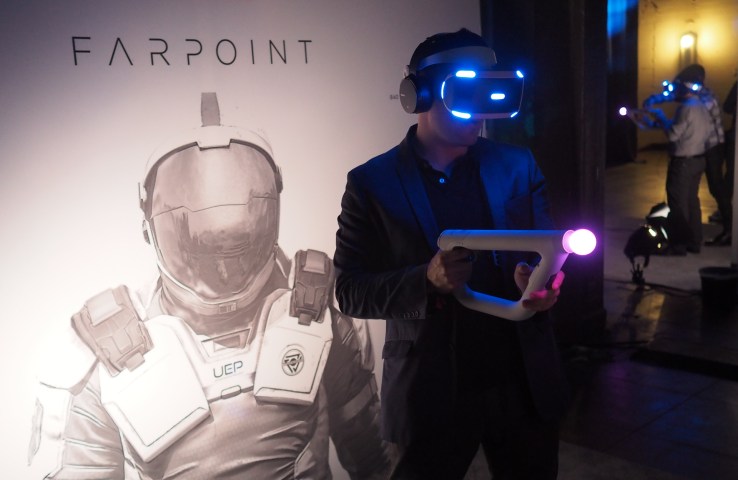
I also had a very good time playing Farpoint, a first-person (naturally) shooter set on a hostile alien planet, the demo for which had me firing bullets, shells, missiles, and grenades at scary, scaly beasts that crawled out of the Mars-like surface through which I was advancing. It succeeds, however, largely on the strength of its core shooting gameplay; the tubelike gun accessory for PlayStation VR transforms in your mind into the futuristic shotgun in your virtual hands and the illusion is instantly convincing. The game fell short of creating a world where everything was interesting, though in an action game your attention is, naturally, attracted to the army of bugs looking to harvest your guts at any cost.
The other shoe
Alas, I was disappointed by “Final Fantasy XV: The VR Experience,” despite being hyped for the game itself. Here, I found, was the worst possible outcome: a game that should and could be interesting, but does almost nothing right.
Unlike “The Climb,” it sounds like a blast on paper. You and the other main characters from the game are in a battle with a Behemoth, one of the game’s most well-known monsters. You’re Prompto, the one who has a gun, supporting your buddies as they fight hand to hand. What it amounts to, however, and I’m heartily sorry to say it, is a disjointed and boring five minutes that may leave you less excited for the game than when you donned the headset.
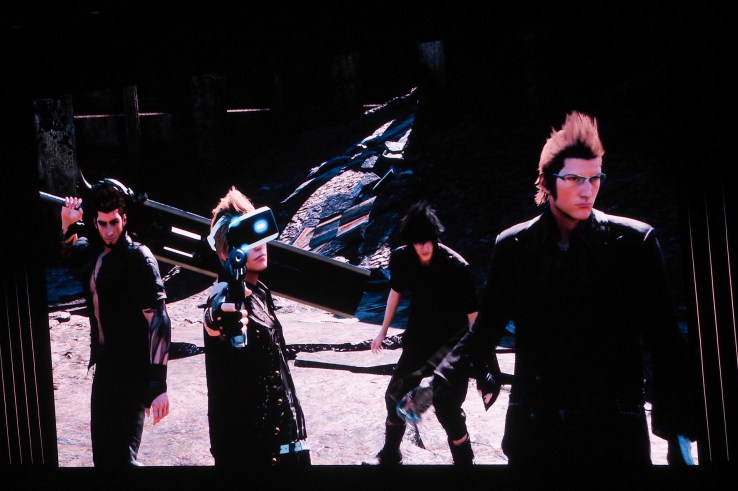
Again you’re a disembodied hand, just one holding a gun — but right off the bat, the alignment was off, so it felt to me that the gun should be pointed up, when in fact it was pointed straight ahead. Right away there’s a disconnect: This isn’t my hand (I’m not “gripping” anything) and this gun is a video game construct (it’s not behaving as expected). For that matter, the demo was seated but your character is standing. Just one more thing that sounds minor but ends up nagging at the corners of your consciousness, nibbling away at the illusion.
You hold the trigger down to fire an endless hail of bullets at the Behemoth, while your buddies slash and slash. Around the arena are scattered little blue spots. You point your gun at these and pull a different trigger to warp there instantly. It’s not a natural way to move at all, and you feel no sense of agility or skill in doing it — because it’s a supernatural act you had no agency in it except to pick from a multiple-choice selection of arrival points. Eventually enough damage numbers jump out of the Behemoth that it dies, and you are treated to a short cutscene where you’re in an empty passenger seat in a car being driven by the mechanic Cid (whom many VR participants unashamedly ogled).
Your actions are proscribed; your position is static; your interactions make no physical sense. Even a 2D FPS on a PC with mouse and keyboard would be more engaging.
High risk, high reward
It’s clear that little thought went into the content, and that a game that is hugely ambitious and successful already on multiple other fronts was simply packaged up into a “VR experience” to ride the wave (probably taking important hours away from important and talented dev team members that could be polishing the game proper). Personally, I think it does the title as much a disservice as a poorly made mobile tie-in game or tacky fast food promotion. If, as with 3D movies, VR games are as apathetically done as this brief demo, it’s going to be hard to convince millions to buy in.
What was good about it was really one thing: you were there. But that “presence” is the one thing pretty much every VR experience can lay claim to now that the hardware is good enough. It’s one of the most important aspects of VR and what makes it unique, the worlds inside it convincing. The problem is it isn’t enough, just as photorealistic graphics in the latest console and PC games aren’t enough.
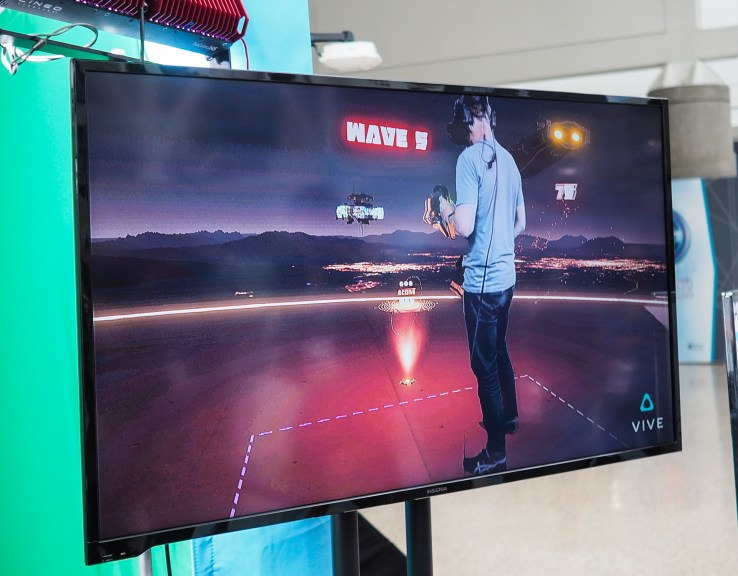
I don’t think that VR should be limited to small-scale environments like a rock wall or office or cockpit — but those do nicely as tutorials that teach what makes such environments engaging. VR is a powerful set of tools, but something is not valuable simply because it employs those tools. What is created still requires a great deal of craft and consideration, and, in fact, when the tools are so powerful, it is a double failure when they are used poorly.
What we are going to have for the next couple years is intense experimentation in how VR can be used, and that is great news. How else will it grow and mature? But the people who will consume the products of that experimentation are smarter and more perceptive than they know, and laxity on the part of creators will be more obvious than ever. At the same time, VR will reward even more highly those who use their ingenuity and imaginations, making experiences that are as natural as the real, but can only occur in the virtual.
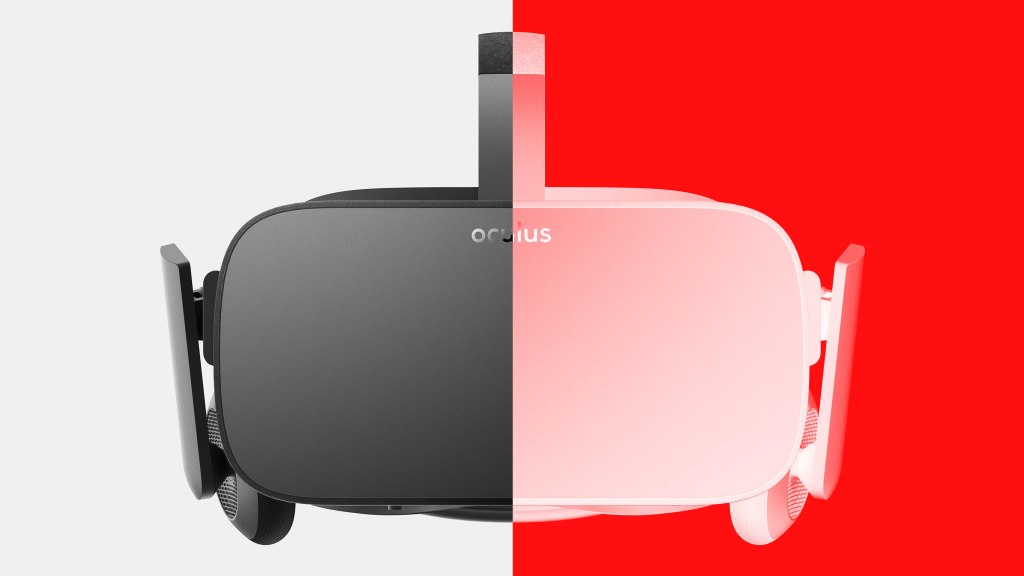
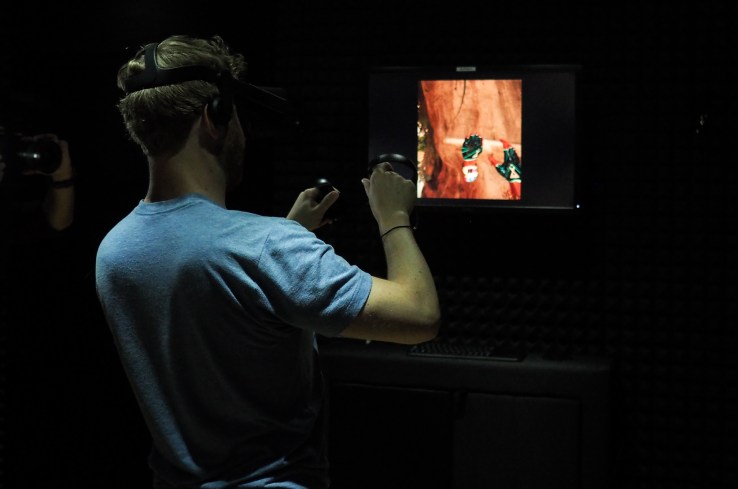





























Comment